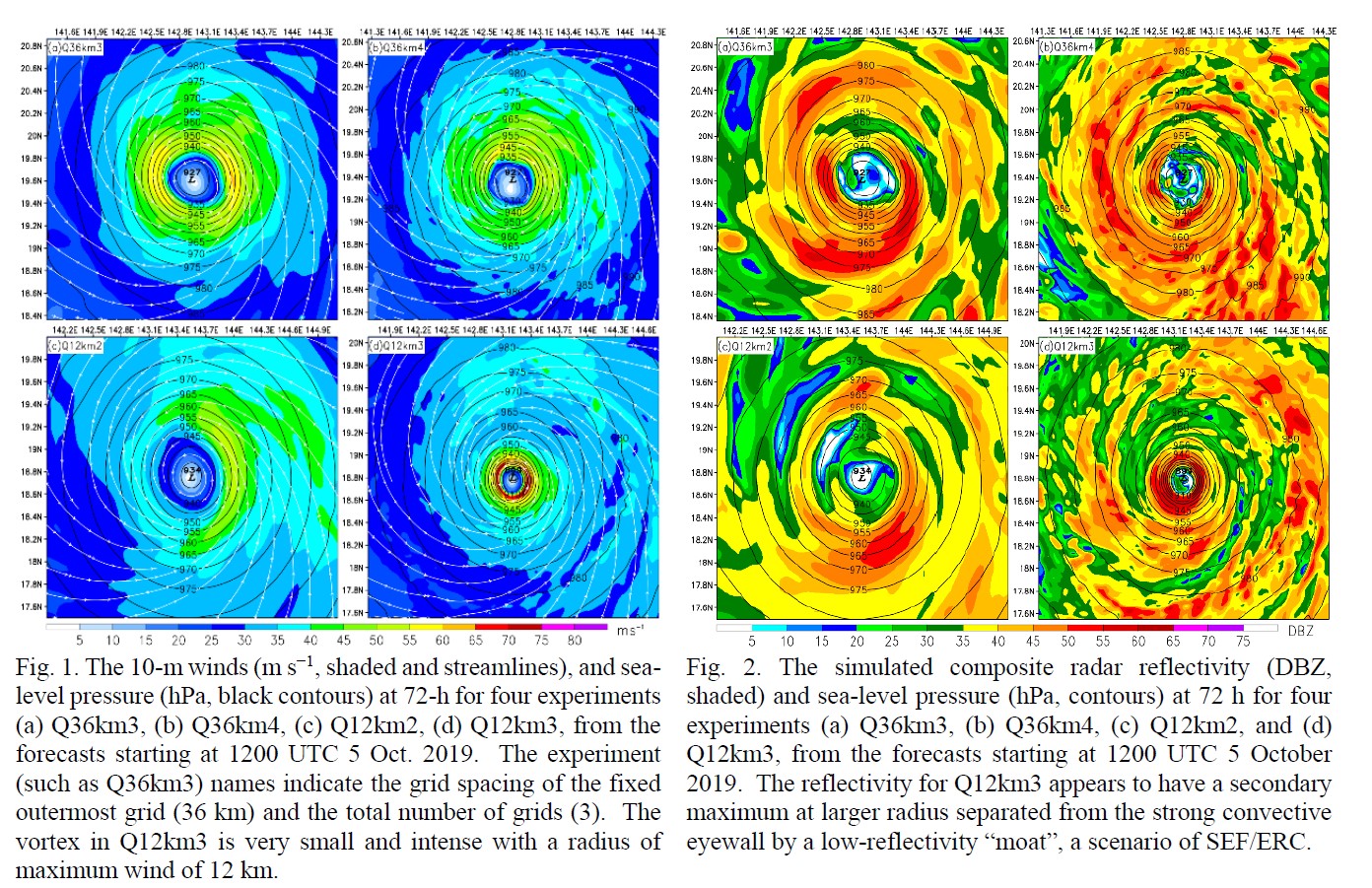Graphical Abstract
Jin, H., J. R. Moskaitis, Y.Jin and J. D. Doyle, 2022: Resolution impact on rapid intensification and structure change of super typhoon Hagibis (2019). J. Meteor. Soc. Japan, 100, 943-964.
Special Edition on Typhoons in 2018-2019
https://doi.org/10.2151/jmsj.2022-049.
Early Online Release
Graphical Abstract
Plain Language Summary: Typhoon Hagibis (2019) had significant societal impacts in Japan and went through a period of explosive rapid intensification (RI), followed by a secondary eyewall formation (SEF) and an eyewall replacement cycle (ERC). Operational forecasts from Coupled Ocean/Atmosphere Mesoscale Prediction System – Tropical Cyclone (COAMPS-TC), with the finest grid spacing at 4-km, failed to capture Hagibis’ explosive RI, peak intensity, and the associated inner-core structural evolution. Four COAMPS-TC sensitivity experiments, initialized at 1200 UTC 5 Oct. 2019, were conducted to study the impact of horizontal resolution on prediction of Typhoon Hagibis’ RI and structure. Results indicate that rapid intensification of the storm to Category 4 intensity can be simulated with the finest grid spacing at 4-km, but use of 1.33-km for the finest grid spacing facilitates more realistic prediction of the explosive intensification rate, Category 5 peak intensity, and small inner core accompanying the RI.
Highlights:
- Our sensitivity experiments indicate that realistic simulation of Hagibis’ SEF/ERC requires simulation of a very intense storm with a small inner core as a prerequisite; therefore the finest grid spacing at 1.33-km is a necessary but not sufficient condition to capture the SEF/ERC.
- The simulation of the RI and SEF/ERC is also sensitive to the resolution of the outermost grid, which has impacts on the storm’s moisture distribution by modulating the flow of moist air from the deep tropics into the TC.
- While these results have implications for the grid configuration of TC prediction models similar to COAMPS-TC, it is also important to gain systematic understanding of the physical processes associated with simulation of explosive RI and SEF/ERC, and the interactions between fine-scale aspects of the TC vortex evolution and that of the large-scale environment.







